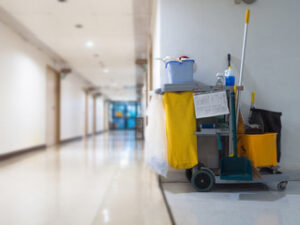Kolby’s Auto Spa is becoming a popular service among car owners who wish to pamper their vehicles and keep them looking and running like new. These specialized establishments offer a variety of services aimed at restoring the vehicle’s appearance, maintaining its functionality, and ensuring a long-lasting shine.

From exterior washing to deep interior cleaning, auto spas provide a luxurious experience for cars that goes far beyond the typical car wash. For many car owners, an auto spa is the perfect way to ensure their vehicle receives the best care and attention.
A typical auto spa experience begins with a thorough exterior wash. This is not just a simple rinse but a multi-step process designed to clean every part of the car’s exterior. Special tools are used to ensure that dirt, grime, and other debris are removed without damaging the vehicle’s paint. Additionally, eco-friendly cleaning products are often used, making the process not only effective but also environmentally responsible. The exterior wash also includes tire cleaning and waxing, which leaves the car’s surface with a smooth, glossy finish that looks like it just rolled out of a showroom.
Interior cleaning is just as important as the exterior wash in an auto spa. A deep interior cleaning involves vacuuming every corner of the car, including the seats, floor mats, and even the trunk. Upholstery may be treated with specialized cleaning solutions to remove stains and odors, while leather seats are carefully cleaned and conditioned to preserve their quality. Carpet cleaning is also part of the service, ensuring that all fabric surfaces are refreshed and restored to their original condition. The goal of an interior clean is not just to remove visible dirt but to create a fresh and inviting atmosphere inside the vehicle.
One of the most sought-after services in an auto spa is paint correction. Over time, a vehicle’s paint can develop imperfections such as swirl marks, scratches, and oxidation. Paint correction is a process that involves using specialized polishing machines and compounds to remove these imperfections and restore the car’s original shine. This process not only improves the appearance of the paint but also protects it from further damage. The corrected paint surface is often followed by a protective wax or sealant layer, which helps maintain the car’s shine and guard against environmental elements like dirt and moisture.
For those who want to take their vehicle’s appearance to the next level, auto spas also offer ceramic coatings. Ceramic coatings provide a durable and long-lasting protective layer that repels water, dirt, and contaminants. This coating enhances the car’s shine and makes it easier to clean in the future. It also provides additional protection against UV rays, preventing the paint from fading over time. Ceramic coatings are highly resistant to scratches and stains, making them an excellent choice for those who want their vehicle to look pristine for years to come.
Beyond the cleaning and aesthetic services, some auto spas provide additional maintenance services that can help keep the vehicle in optimal running condition. These may include engine bay cleaning, which involves removing debris and dirt from under the hood to improve the performance of the engine. An engine that is regularly cleaned is less likely to overheat and is generally more efficient. Some auto spas also offer fluid checks, tire rotations, and other minor mechanical services that can prevent bigger issues from arising.
Another popular feature of many auto spas is the inclusion of odor removal services. Over time, cars can develop unpleasant odors due to a variety of factors, such as food, pets, or humidity. Auto spas utilize ozone machines and other odor-neutralizing methods to eliminate these smells and leave the vehicle smelling fresh. This is especially beneficial for individuals who spend a lot of time in their vehicles and want to create a comfortable environment.
The auto spa experience is not limited to just the exterior and interior of the vehicle. Many services also focus on the finer details that contribute to the overall appeal of the car. These can include tire dressing, which restores the tires’ black sheen, and chrome polishing, which enhances the appearance of metal trim. Additionally, windows are cleaned to perfection, ensuring that the car’s glass is spotless and free of streaks. These small touches can make a significant difference in how the vehicle looks and feels when you drive it.
For car owners who enjoy a well-maintained vehicle but don’t have the time to visit an auto spa regularly, some establishments offer membership packages. These memberships can provide customers with discounts, priority booking, and access to exclusive services. A membership can be a cost-effective way for car enthusiasts to keep their vehicles in top condition throughout the year. It also allows for regular maintenance, which helps preserve the vehicle’s value and ensures that it remains in excellent shape.
With all the services and benefits offered by auto spas, it’s no wonder that they have become a favorite among vehicle owners. Whether you are looking to give your car a complete makeover or simply want to maintain its appearance, an auto spa provides a comprehensive solution. The combination of professional-grade cleaning, detailing, and maintenance services ensures that your vehicle receives the care it deserves. Auto spas are not just for luxury vehicles but are a great option for anyone who wants to keep their car looking and running its best.
In addition to the tangible benefits, auto spas also offer an experience that car owners can enjoy. The peaceful atmosphere, the sound of soft music, and the attention to detail create an environment where customers can relax while their vehicles are being pampered. This is more than just a car wash; it’s an experience that promotes the well-being of both the vehicle and the owner. For those who take pride in their cars, the auto spa offers a sanctuary where their vehicles can receive the highest level of care.
The growing popularity of auto spas reflects a broader trend of people taking better care of their possessions and valuing quality service. As the automotive industry continues to evolve, so too do the services that cater to it. Auto spas are an excellent example of how businesses are responding to customer demand for more specialized, high-quality services. For car owners who appreciate the finer details of vehicle care, an auto spa is a valuable investment in both the longevity of their vehicle and their overall satisfaction.
In conclusion, auto spas offer a comprehensive range of services designed to enhance the appearance, performance, and longevity of your vehicle. From exterior washes and interior detailing to specialized services like paint correction and ceramic coatings, auto spas provide an unparalleled level of care. Whether you are looking to maintain the appearance of your car or give it a complete makeover, an auto spa is the perfect place to achieve your goals. By investing in these services, car owners can ensure their vehicles remain in excellent condition for years to come.


